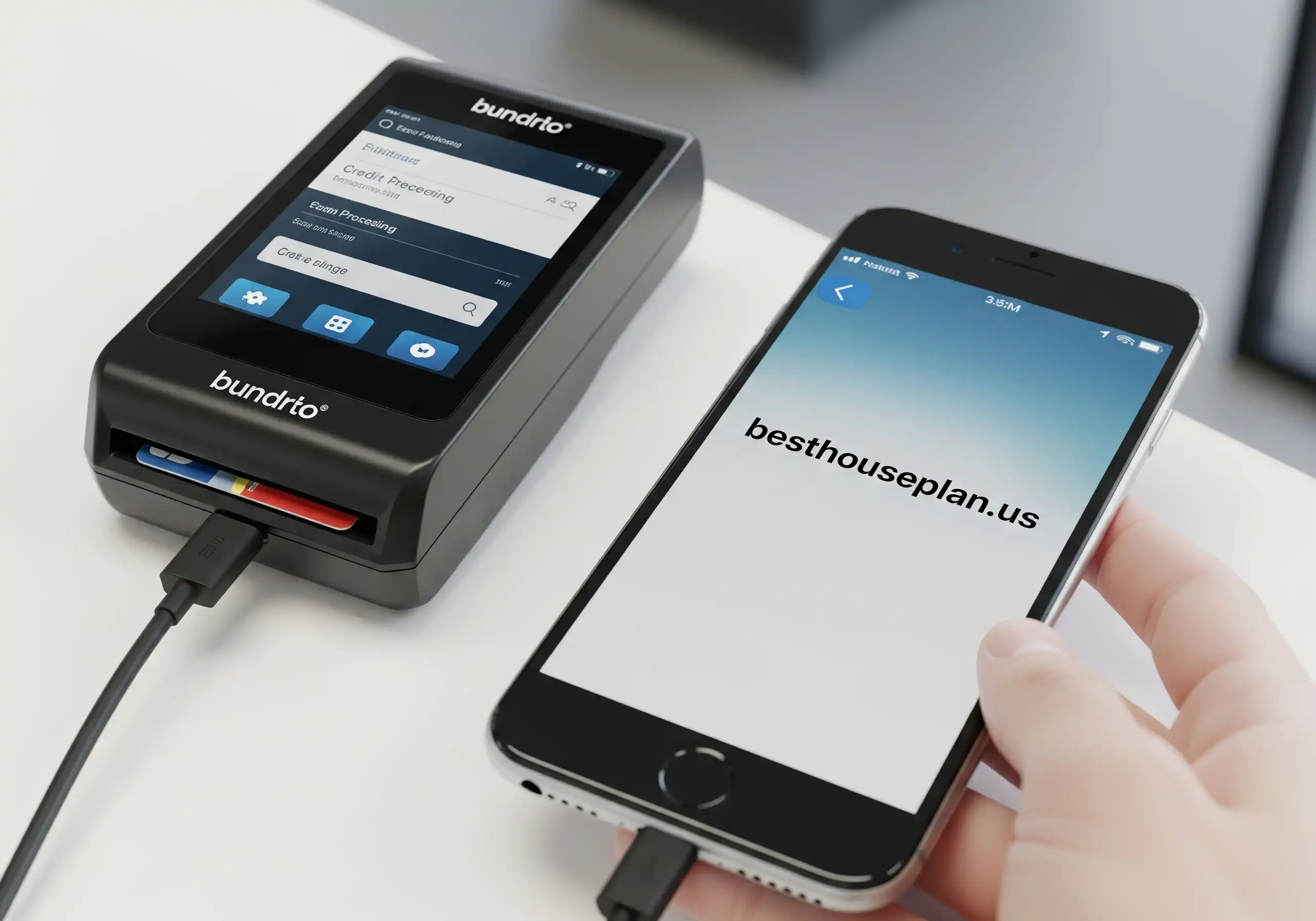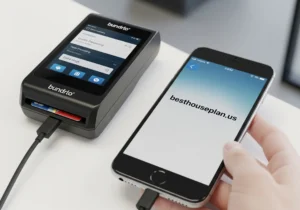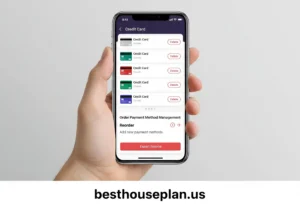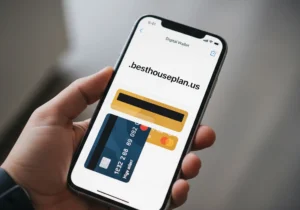Credit Card Charger iPhone Lightning Reader Order Payment Processing Device Merchant Expert sets the stage for this thrilling overview of cutting-edge payment solutions. Imagine effortlessly processing payments on the go, enhancing customer satisfaction with the seamless integration of technology into everyday transactions. This innovative device streamlines payment processing for merchants, transforming how they conduct business and interact with customers.
As mobile payment technology continues to evolve, the benefits of using a Lightning reader for payment processing are undeniable. With the power to accept credit card payments directly through iPhone devices, merchants can tap into current trends that favor convenience, security, and speed. Let’s delve into the features that make this device an essential tool for modern businesses.
Introduction to Credit Card Charger for iPhone
In today’s fast-paced world, the convenience of mobile payment technology has become essential for both consumers and merchants. A Credit Card Charger for iPhone, equipped with a Lightning reader, enables merchants to process transactions efficiently with just a few taps on their devices. This innovative tool not only streamlines payment processing but also enhances the shopping experience for customers.The functionality of a credit card charger for iPhone lies in its ability to connect directly to the device, allowing merchants to accept payments via credit cards and mobile wallets seamlessly.
This device typically features a compact design making it portable and easy to integrate into any point-of-sale setup. By utilizing a Lightning reader, merchants can cater to a variety of payment methods, increasing their sales potential and customer satisfaction.
Benefits of Using a Lightning Reader for Payment Processing
Embracing a Lightning reader for payment processing presents numerous advantages for merchants looking to enhance their business operations. The following points illustrate the significant benefits:
- Portability: The compact design allows merchants to accept payments anywhere, whether at a physical store, pop-up shop, or while on-the-go.
- Quick Transactions: Transactions can be completed in seconds, reducing wait times and improving customer experience.
- Enhanced Security: Lightning readers come with encryption technology that ensures secure payment processing, protecting both the merchant and customer data.
- Integration with Apps: These readers can easily integrate with existing sales apps, making it simpler for merchants to manage inventory and sales data.
- Acceptance of Multiple Payment Types: By accommodating various payment methods, including contactless payments, merchants can cater to a wider audience.
Current Trends in Mobile Payment Technology for Merchants
The landscape of mobile payment technology is ever-evolving, with trends that are shaping how merchants engage with customers. Staying updated on these trends can give businesses a competitive edge. Key trends include:
- Contactless Payments: The rise of NFC technology allows customers to pay simply by tapping their cards or smartphones, promoting faster transactions.
- Mobile Wallets: Services like Apple Pay and Google Pay are gaining popularity, encouraging merchants to adopt systems that accept these payment methods.
- Integration of AI: AI technologies are being implemented to analyze customer behavior and optimize payment processes, leading to personalized shopping experiences.
- Subscription Services: With the rise of e-commerce, many merchants are incorporating subscription-based models, requiring efficient recurring payment options.
- Enhanced Analytics: Modern payment processing systems provide detailed analytics, helping merchants understand sales trends and customer preferences.
Understanding Payment Processing Devices
In today’s fast-paced retail environment, having an efficient payment processing device is essential for merchants. These devices enable businesses to accept payments securely and conveniently, enhancing the customer experience while streamlining operations. This segment explores the various types of payment processing devices available, their features, and the unique advantages that Lightning readers offer to iPhone users.
Types of Payment Processing Devices
Merchants have access to a wide range of payment processing devices that cater to different business needs. Understanding these options is crucial for selecting the right solution. Here are some common types of payment processing devices available in the market:
- Traditional Card Readers: These devices are typically used in brick-and-mortar stores, allowing merchants to swipe, dip, or tap customer cards. They often connect to a cash register or POS system and support EMV chip cards and contactless payments.
- Mobile Card Readers: Designed for businesses on the go, mobile card readers connect to smartphones or tablets via Bluetooth or audio jack. They are perfect for vendors, service providers, and anyone needing portability.
- Integrated Point-of-Sale Systems: These comprehensive solutions combine hardware and software to manage sales, inventory, and customer data all in one platform. They are ideal for larger businesses with complex needs.
- Contactless Payment Terminals: These devices enable customers to make payments by simply tapping their cards or smartphones, offering speed and convenience, especially in high-traffic locations.
Comparison of Traditional Card Readers and Mobile Solutions
The choice between traditional card readers and mobile solutions hinges on several factors including functionality, cost, and ease of use. Understanding the differences can help merchants make informed decisions suitable for their business model. Traditional card readers are often more robust and offer greater features for high-volume sales environments. However, they may involve higher upfront costs and installation requirements.
Mobile solutions, on the other hand, provide flexibility and lower initial investment, making them accessible for small businesses and freelancers. While they may lack some advanced features of traditional systems, their convenience often outweighs the limitations, especially for businesses that operate in various locations.
Advantages of Using a Lightning Reader for iPhone Users
Lightning readers specifically designed for iPhone users offer a multitude of advantages that enhance the payment experience. These advantages include:
- Seamless Integration: Lightning readers connect directly to iPhones, ensuring compatibility and ease of use without the need for additional adapters or cumbersome setups.
- Portability: Their compact design allows iPhone users to accept payments anywhere, making them ideal for pop-up shops, food trucks, or service professionals.
- Enhanced Security: Lightning readers leverage advanced encryption standards to protect sensitive payment information, ensuring customer data is secure during transactions.
- User-Friendly Interface: The integration with iPhones allows for intuitive software interfaces that are familiar to users, streamlining the payment process.
- Real-Time Analytics: Many Lightning readers come with built-in analytics tools, providing merchants with valuable insights into sales trends and customer behavior, directly through their iPhone.
“Utilizing a Lightning reader not only simplifies the payment process but also enhances customer satisfaction through quick and secure transactions.”
Order the impressive Verizon Samsung Galaxy S23 FE Order Fan Edition Carrier Compatible Network today! With its cutting-edge features and sleek design, this smartphone caters to all your digital needs while providing seamless network compatibility. Stay connected and enjoy an enhanced mobile experience, tailored just for you.
Merchant Expert Insights
Merchant experts play a crucial role in navigating the complex landscape of payment processing for businesses. They provide valuable insights that not only streamline transactions but also enhance customer experience, ultimately driving sales growth. Understanding their significance can empower merchants to make informed decisions about payment solutions that align with their operational needs.The selection of a payment processing device is a pivotal decision for any business.
A merchant expert recommends considering several critical factors to ensure the chosen device meets the specific needs of the enterprise. These factors include transaction volume, types of payments accepted, and integration with existing systems.
Strategies for Selecting Payment Processing Devices
Choosing the right payment processing device is essential for optimizing business operations. The following strategies can assist merchants in making a sound choice:
- Assess Business Needs: Evaluate the nature of your business and the payment types you need to accommodate, whether it’s credit cards, mobile wallets, or contactless payments.
- Transaction Volume Consideration: Estimate your average daily transaction volume to select a device that can handle your business’s traffic efficiently.
- Integration Capabilities: Ensure the device can seamlessly integrate with your existing point-of-sale (POS) systems for a smoother operational flow.
- Cost Analysis: Compare the total cost of ownership, including transaction fees, monthly charges, and hardware costs, to identify a cost-effective solution.
- Customer Support and Security Features: Opt for devices that offer robust customer support and enhanced security features to protect sensitive data.
Common challenges in payment processing often stem from technical issues, customer disputes, or compliance with regulations. Understanding these challenges can help merchants proactively address them.
Challenges in Payment Processing and Solutions
Merchants frequently encounter various challenges in payment processing that can hinder their operations. Recognizing these issues and implementing solutions can significantly improve transaction efficiency.
- Technical Glitches: Devices may occasionally malfunction, leading to transaction delays. Regular software updates and reliable vendor support can mitigate this risk.
- Disputes and Chargebacks: Disputes can arise from customer dissatisfaction or fraudulent transactions. Implementing clear return policies and using fraud detection tools can help minimize chargebacks.
- Compliance with Regulations: Keeping up with industry regulations can be daunting. Engaging with a merchant expert for guidance can ensure compliance and avoid legal issues.
- High Processing Fees: Unexpected fees can erode profits. Evaluate and negotiate processing rates with providers to secure favorable terms.
“Understanding payment processing is not just about technology; it’s about enhancing customer experience and driving sales.” – Merchant Expert
Order Payment Processing Workflow
The order payment processing workflow is a critical aspect of conducting business in today’s digital economy. Efficient payment processing not only enhances the customer experience but also boosts overall merchant productivity. Understanding the sequence of operations involved in payment processing using a credit card charger is vital for both merchants and consumers.The payment processing workflow typically involves several key steps, each designed to ensure that transactions are secure, efficient, and accurate.
Here’s an overview of the essential stages involved in this process:
Steps in the Order Payment Processing Workflow, Credit Card Charger iPhone Lightning Reader Order Payment Processing Device Merchant Expert
A well-defined order payment processing workflow ensures clarity and efficiency in transactions. Below are the pivotal steps that merchants should follow when processing payments with a credit card charger:
- Customer Initiates Payment: The customer decides to make a purchase and presents their credit card information at the point of sale or through a digital platform.
- Transaction Data Capture: The merchant’s credit card charger captures the necessary transaction data, including the card number, expiration date, and security code.
- Data Encryption: To protect sensitive information, the transaction data is encrypted before being sent to the payment processor, mitigating the risk of data breaches.
- Payment Gateway Processing: The encrypted data is transmitted to a payment gateway, which verifies the transaction and checks for sufficient funds or credit availability.
- Authorization Request: The payment gateway communicates with the customer’s bank to obtain authorization for the transaction. This includes verifying card legitimacy and available funds.
- Authorization Response: The bank sends an authorization response back to the payment gateway indicating whether the transaction is approved or declined.
- Transaction Completion: Upon receiving an approval, the merchant completes the sale, and a receipt is generated for the customer.
- Settlement and Fund Transfer: Once the transaction is finalized, the funds are settled between the merchant’s bank and the customer’s bank, completing the payment cycle.
Security Measures in Payment Processing
Securing payment transactions is paramount for any merchant using a credit card charger. Implementing robust security measures can protect both merchant and customer information during the payment processing workflow. The following security practices are essential:
PCI Compliance
Merchants must comply with the Payment Card Industry Data Security Standards (PCI DSS), which sets requirements for secure handling of cardholder data.
Encryption Protocols
Utilizing strong encryption methods, such as SSL (Secure Sockets Layer), helps safeguard sensitive transaction data during transmission.
Tokenization
This process replaces sensitive payment information with a unique identification symbol (token) that cannot be reversed to the original data, minimizing data exposure.
Fraud Detection Tools
Implementing advanced fraud detection systems can identify suspicious transactions and prevent fraud before it occurs.
Protect your smartphone with confidence using the Waterproof Phone Pouch Swimming Beach Purchase IP68 Protection Tech Expert Certified. This durable pouch ensures your device stays safe from water damage while you swim or relax at the beach. With top-notch IP68 protection, you can capture all your summer memories worry-free!
Regular Security Audits
Conducting periodic security assessments ensures that systems are up-to-date and vulnerabilities are addressed promptly.
“Implementing robust security measures not only protects sensitive information but also builds customer trust.”
Unfold the future with the Straight Talk Samsung Galaxy Z Flip 4 Purchase Foldable Prepaid Carrier Compatible. This innovative foldable phone combines style with functionality, allowing you to switch between compact and expansive displays seamlessly. Enjoy the freedom of prepaid plans without compromising on technology.
Payment Processing Workflow Flowchart
To visually represent the order payment processing workflow, a flowchart can be a powerful tool. The flowchart illustrates the sequential steps involved, providing a clear overview of the entire process from initiation to settlement.
Step 1
Customer Initiates Payment
Step 2
Never run out of power again with the Power Bank Portable Charger Phone Purchase High Capacity Tech Expert Certified. This high-capacity charger is designed for on-the-go lifestyles, ensuring your devices are always ready for use. Compact and efficient, it’s the perfect companion for travel or busy days.
Transaction Data Capture
Step 3
Data Encryption
Step 4
Experience the stunning visuals of the AT&T Samsung Galaxy S23 Plus Purchase Large Display Carrier Compatible Network. With its expansive display and powerful performance, this device is perfect for streaming, gaming, and multitasking. Stay connected with the best carrier compatibility for an uninterrupted experience on the go.
Payment Gateway Processing
Step 5
Discover the ultimate value with the T Mobile Samsung Galaxy A14 Purchase Ultra Budget Carrier Compatible Network. This smartphone offers a perfect blend of affordability and functionality, making it the ideal choice for users seeking a reliable device without breaking the bank. Experience seamless connectivity across various networks while enjoying all the essential features you need.
Authorization Request
Step 6
Elevate your workout experience with the Beats Fit Pro Earbuds Active Workout Purchase Premium Audio Tech Expert Certified Quality. These earbuds deliver exceptional sound quality and are designed for the active lifestyle, ensuring you stay motivated during your workouts. Enjoy immersive audio and a secure fit that keeps up with your every move.
Authorization Response
Step 7
Transaction Completion
Step 8
Settlement and Fund Transfer This structured visual aids merchants in understanding and optimizing their payment processing workflows, ensuring a seamless transaction experience for customers.
Best Practices for Merchants
Successfully integrating credit card chargers into existing payment systems requires careful planning and execution. By following best practices, merchants can streamline their payment processes, enhance customer satisfaction, and ultimately drive sales. It’s essential to recognize the role of customer support and proper training in maximizing the benefits of these payment processing devices.
Integration of Credit Card Chargers
Integrating credit card chargers into existing payment systems enhances transaction efficiency and customer experience. Merchants should consider the following best practices for a seamless integration:
- Evaluate Current Systems: Assess existing payment processing systems to determine compatibility with new credit card chargers, ensuring minimal disruption during the transition.
- Choose Reliable Hardware: Select high-quality credit card chargers that provide dependability and fast processing times to enhance customer satisfaction.
- Test Payment Flows: Before full deployment, conduct thorough testing of payment workflows to identify any potential issues and ensure smooth operation.
- Keep Software Updated: Regularly update payment processing software to leverage new features and security enhancements, protecting both merchant and customer data.
- Monitor Transactions: Implement systems to consistently monitor transaction processes and address discrepancies immediately to maintain customer trust.
Importance of Customer Support and Training
Customer support and training are critical components for merchants using credit card chargers. Providing adequate resources can lead to more efficient payment processing and improved customer experiences.
- Establish Support Channels: Set up dedicated support channels for quick resolution of technical issues and inquiries related to payment processing devices.
- Comprehensive Training Programs: Develop training sessions for staff that cover device operation, troubleshooting, and customer interaction best practices to ensure confidence in using the technology.
- Regular Refresher Courses: Offer ongoing training to accommodate updates or changes in payment processing procedures, keeping staff informed and capable.
- Documentation Availability: Provide easily accessible documentation, including user manuals and FAQs, to empower staff to resolve common issues independently.
Payment Processing Setup Checklist
To ensure an effective payment processing setup, merchants should follow a comprehensive checklist that covers essential factors. This preparation can prevent common pitfalls and facilitate a smooth transaction process.
- Assess Payment Needs: Identify the primary payment methods your customers prefer and ensure the credit card charger supports these options.
- Configure Payment Settings: Set up payment processing settings according to business requirements, including tax calculations and currency conversions.
- Test Hardware and Software: Perform rigorous tests on all hardware and software components to confirm compatibility and functionality.
- Review Compliance Standards: Ensure that your payment processing systems comply with industry standards and regulations, such as PCI DSS, to protect customer information.
- Prepare for Customer Feedback: Create mechanisms to gather customer feedback on the payment process, helping to identify areas for improvement.
Future Trends in Mobile Payments
The landscape of mobile payments is evolving rapidly, driven by technological advancements and changing consumer expectations. As merchants adapt to these transformations, understanding future trends becomes crucial for maintaining a competitive edge. Embracing innovation not only enhances the customer experience but also streamlines payment processes, ultimately benefiting business growth.Emerging technologies are set to redefine how mobile payment processing operates. The integration of artificial intelligence (AI), machine learning, and blockchain technology is paving the way for more secure and efficient transactions.
These innovations foster enhanced customer engagement and satisfaction by allowing for personalized experiences and data-driven decision-making. The focus on contactless payments is also increasing, as consumers prioritize safety and convenience in their purchasing habits.
Influences of Evolving Consumer Behavior
Changing consumer behavior is significantly influencing how merchants strategize their payment processes. The demand for seamless transactions and flexible payment options has never been higher. Customers increasingly prefer quick, hassle-free experiences, leading to a surge in mobile wallet usage and subscription-based payment models. Merchants are now crafting strategies that prioritize user experience, catering to the growing trend of digital native customers who value speed and efficiency in their financial interactions.To illustrate current and future trends in mobile payment technology, the following table compares established practices with anticipated developments:
| Current Trends | Future Trends |
|---|---|
| Standard credit/debit card payments | Biometric authentication for secure payments |
| Contact-based payment methods | Increased use of contactless payment options |
| Traditional point-of-sale systems | Integration of AI-powered payment solutions |
| Limited payment options | Diverse payment methods including cryptocurrencies |
| Manual transaction processes | Automated and real-time transaction processing |
The shift towards mobile payments is not just about technology; it’s a response to a fundamental change in consumer expectations and behaviors.
Closing Summary
In conclusion, the Credit Card Charger iPhone Lightning Reader Order Payment Processing Device Merchant Expert is not just a gadget; it’s a game-changer in the world of mobile payments. By embracing the latest technology, merchants can optimize their payment processes, engage better with customers, and stay ahead in a competitive marketplace. The future of mobile transactions is here, and it’s time to elevate your business with this remarkable device.
FAQ Section: Credit Card Charger IPhone Lightning Reader Order Payment Processing Device Merchant Expert
What is the Credit Card Charger iPhone Lightning Reader?
It is a device that allows merchants to process credit card payments directly through iPhones using a Lightning connection.
How does the payment processing workflow work?
The workflow involves connecting the Lightning reader to the iPhone, entering transaction details, and securely processing the payment in real-time.
Are transactions secure with this device?
Yes, it incorporates advanced security measures to protect sensitive payment information during transactions.
Can I use it with other payment systems?
Yes, the Lightning reader is compatible with various payment processing apps and services.
What kind of support is available for merchants?
Merchants receive training and customer support to assist with device integration and troubleshooting.








Leave a Comment